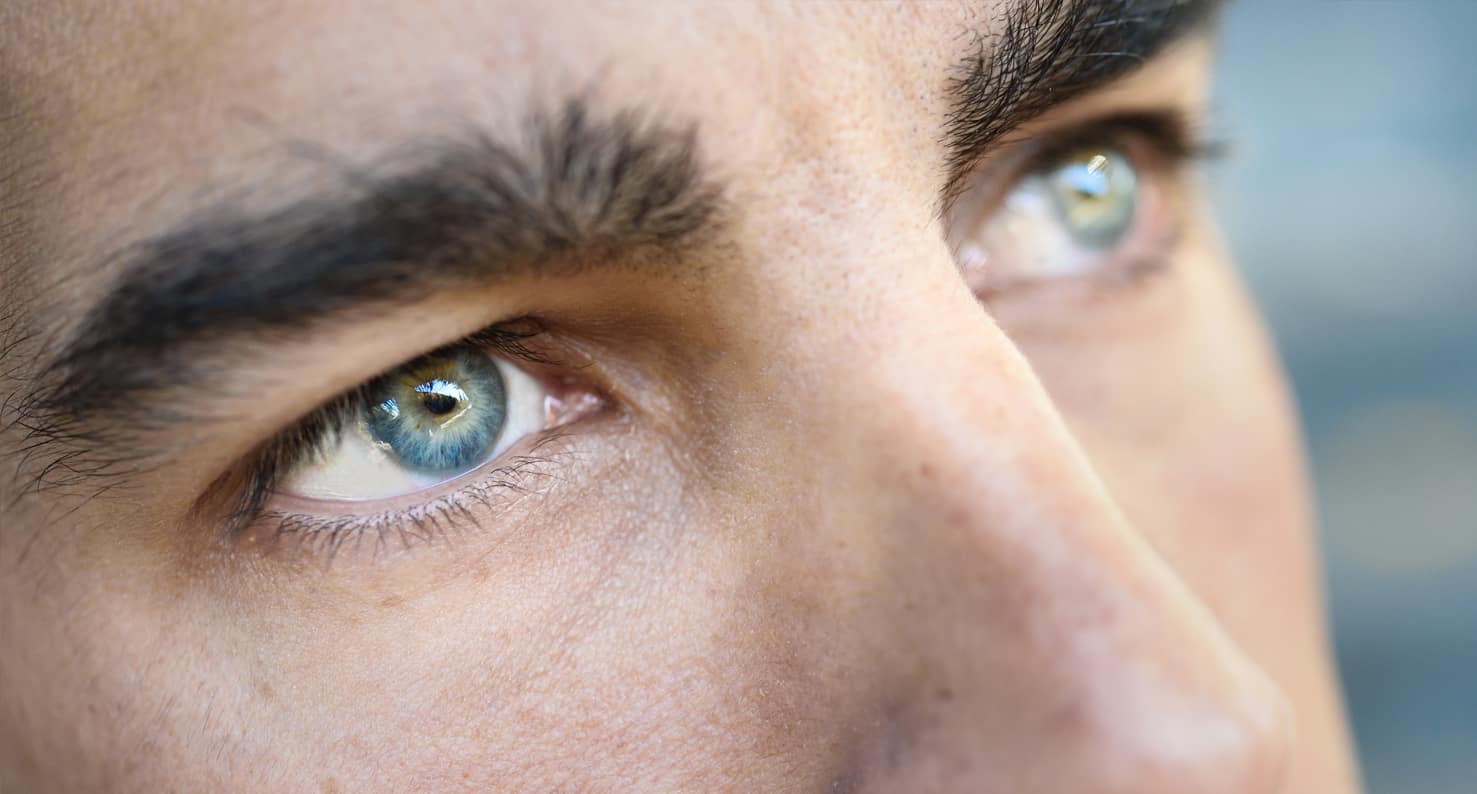What Is a Refractive Error?
Published by on May 29, 2018
Blurry vision can be attributed to several causes, which are related to how the eye works and how it has developed. The eye is a complex system that translates light into images, but our eyes do not always work perfectly. Their exact size and shape affect how well they focus light. These differences can cause some of us to have vision that is unclear or unfocused. This poor vision quality caused by the eye’s structure is referred to as refractive error.
There are multiple types of common vision conditions resulting in refractive error, such as nearsightedness, farsightedness, astigmatism, and dysfunctional lens syndrome (DLS) stages 1 through 3.
Learn more about each common refractive error and how your vision can be corrected with refractive surgery (laser vision correction).

Nearsightedness (Myopia)
You suffer from nearsightedness when nearby objects appear clear but objects viewed at a distance are blurry. You have a hard time focusing on an object or detail far away, or across the room.
Nearsightedness occurs when the cornea is too rounded or steep, or the eyeball is too long. To learn more about this refractive error, please watch the video below.
Nearsightedness is fairly common, and becoming moreso. Approximately 42 percent of Americans between the ages of 12 and 54 are nearsighted. This rate is up from 25 percent in 1971.
Farsightedness (Hyperopia)
You suffer from farsightedness when objects at a distance are clear, but objects up close are blurry. Farsightedness occurs when the cornea is too flat or the eye is too short, preventing light from properly lining up on the retina. To learn more about this refractive error, please watch the video below.
Farsightedness is not necessarily an age-related condition, and can affect both children and adults. Less common than nearsightedness, farsightedness affects around 5 to 10 percent of Americans. If your parents are farsighted, you may be more likely to develop farsightedness as well.
Astigmatism
You suffer from astigmatism when light comes into your eye and is focused inconsistently, resulting in objects appearing stretched or distorted. Astigmatism occurs when the cornea has an irregular oval shape, and can occur simultaneously with nearsightedness or farsightedness. To learn more about this refractive error, please watch the video below.
Many people mistakenly believe that those with astigmatism cannot be helped by laser vision correction. This is not true. Today’s LASIK vision correction can safely and effectively treat nearsightedness, farsightedness, and astigmatism. At Kugler Vision, Lance Kugler, MD, specializes in vector analysis for the treatment of astigmatism.

Dysfunctional Lens Syndrome (DLS) Stage 1 – Presbyopia
DLS stage 1 is the clinical term for the near vision changes that begins to affect us in our 40s and 50s. Over time, the eye’s natural lens becomes too stiff to effectively focus up close, resulting in print and other nearby objects appearing blurry. To learn more about this refractive error, please watch the video below.
If you’re suddenly experiencing near vision changes, it is normal to have questions. Though the near vision loss associated with DLS is frustrating, it is an entirely normal part of the aging process and affects all people – even those who have had vision correction like LASIK. If you have had LASIK in the past and are now experiencing DLS, it does not mean that your LASIK has “worn off.”
The effects of LASIK are permanent. LASIK corrects vision by changing the shape of the cornea, or the outer layer of the eye. Near vision loss from DLS is caused by changes to the eye’s lens, a completely different part of the eye. The good news is that there are excellent solutions for near vision loss. DLS stage 1 can be treated with a corneal inlay procedure or refractive lens exchange (RLE).

Refractive Surgery Corrects Refractive Errors
With today’s technology, laser vision correction can correct all of the refractive errors detailed above. And, with the fairly recent addition of revolutionary procedures like SMILE laser vision correction, clear vision is becoming more attainable than ever before – even for those who previously thought they were not candidates for laser vision correction.
Laser vision correction can correct:
- Nearsightedness (myopia)
- Farsightedness (hyperopia)
- Astigmatism
- DLS
To learn more about how refractive surgery can treat refractive errors, please watch the video below.
Are You a Candidate?
If you are experiencing one or more of these refractive errors, it’s time to schedule a vision correction consultation at Kugler Vision. We can help you achieve the clear and natural vision you deserve, so you can enjoy life to the fullest without the hassles of glasses and contacts. Call us at 402.558.2211 to ask questions or to schedule your consultation to find out which vision solution is right for your eyes.

Lance Kugler, MD, is a specialist in LASIK and vision correction surgery and CEO of Kugler Vision. A proud Omaha native, he is passionate about improving lives through clear vision. Dr. Kugler serves on several national boards, and his practice is recognized internationally as a center of excellence. Dr. Kugler is one of the original founders of the Refractive Surgery Alliance, an international organization comprised of over 350 of the world’s leading vision correction surgeons; he also served as its first president. In 2019, Dr. Kugler was selected as a TEDx speaker, and delivered a talk in Omaha about the worldwide epidemic of nearsightedness and refractive solutions. Dr. Kugler is an Associate Professor of Refractive Surgery at the University of Nebraska Medical Center’s Truhlsen Eye Institute, has been published in many medical journals, and participates in numerous clinical studies to advance the field of vision correction surgery. Additionally, Dr. Kugler is proud to be a Board Certified Fellow of the World College of Refractive Surgery & Visual Sciences. Dr. Kugler and his wife are proud parents to five active kids. When he has a spare moment, he enjoys skiing, tennis, travel, and fine coffee.




Leave a Reply